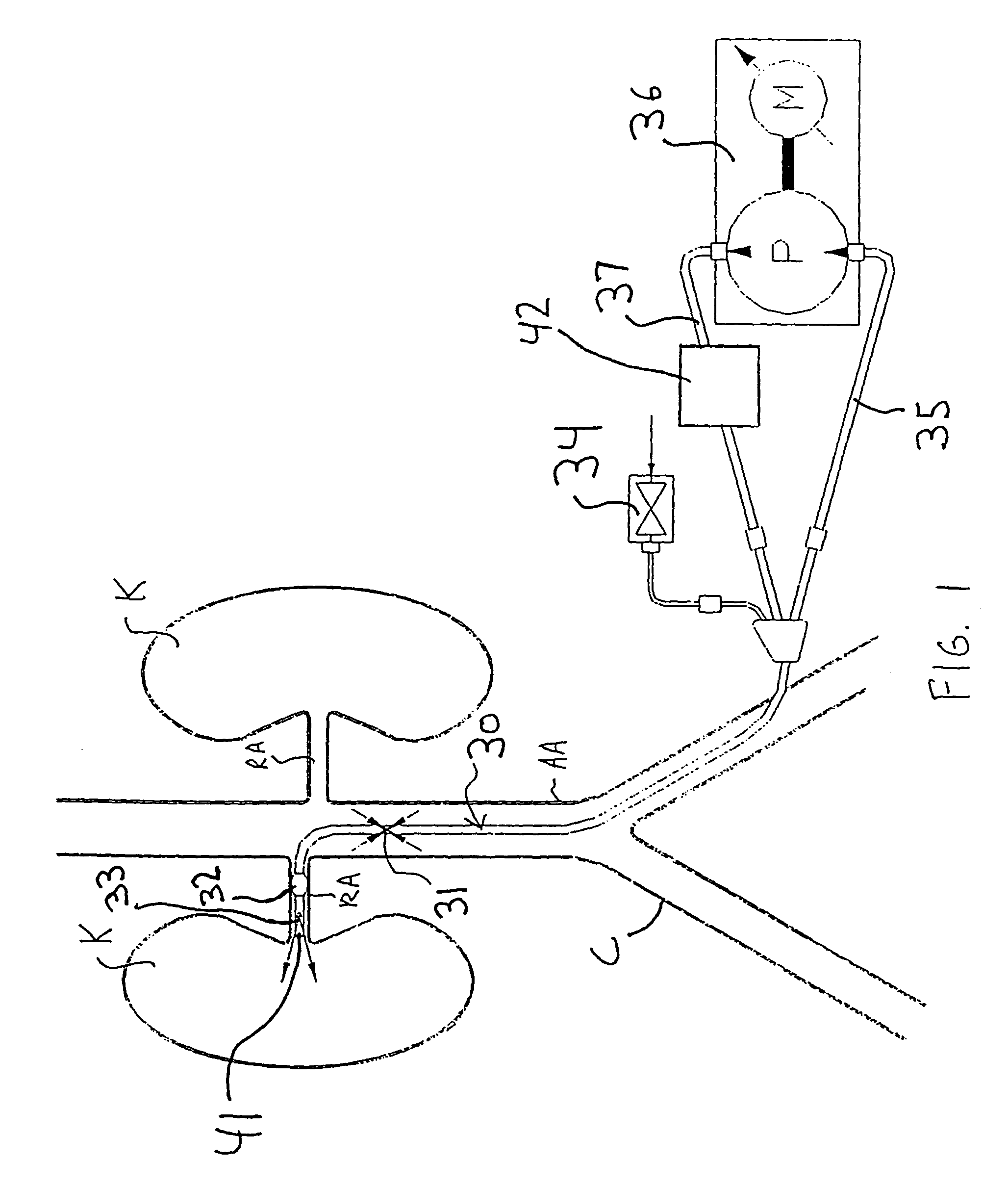Apparatus and methods for treating congestive heart disease
a technology of congestive heart disease and apparatus, applied in the field of apparatus for treating acute renal failure, can solve the problems of reducing cardiac output, causing excessive fluid in the body, patient to go into arf, etc., and achieve the effect of enhancing renal function and improving blood flow to the kidneys
- Summary
- Abstract
- Description
- Claims
- Application Information
AI Technical Summary
Benefits of technology
Problems solved by technology
Method used
Image
Examples
Embodiment Construction
[0052]The present invention provides several apparatus for treating patients suffering from congestive heart failure (“CHF”) by improving renal blood flow and renal function. Some preferred embodiments of the present invention provide active perfusion of the renal arteries, and comprise a catheter and an extracorporeal pump. The catheter and pump may be used either to withdraw autologous blood from the patient's body and reperfuse that blood into the patient's renal arteries, or to isolate a region of the abdominal aorta and cause a pressure differential within the isolated region that causes perfusion of the renal arteries.
[0053]Other preferred embodiments of the present invention cause a constriction in the abdominal aorta downstream (proximal) of the renal arteries, so that the pressure differential resulting from the constriction preferentially perfuses the renal arteries.
[0054]Referring to FIGS. 1 and 2A-2B, a first illustrative embodiment of an active perfusion apparatus of th...
PUM
 Login to View More
Login to View More Abstract
Description
Claims
Application Information
 Login to View More
Login to View More - R&D
- Intellectual Property
- Life Sciences
- Materials
- Tech Scout
- Unparalleled Data Quality
- Higher Quality Content
- 60% Fewer Hallucinations
Browse by: Latest US Patents, China's latest patents, Technical Efficacy Thesaurus, Application Domain, Technology Topic, Popular Technical Reports.
© 2025 PatSnap. All rights reserved.Legal|Privacy policy|Modern Slavery Act Transparency Statement|Sitemap|About US| Contact US: help@patsnap.com



